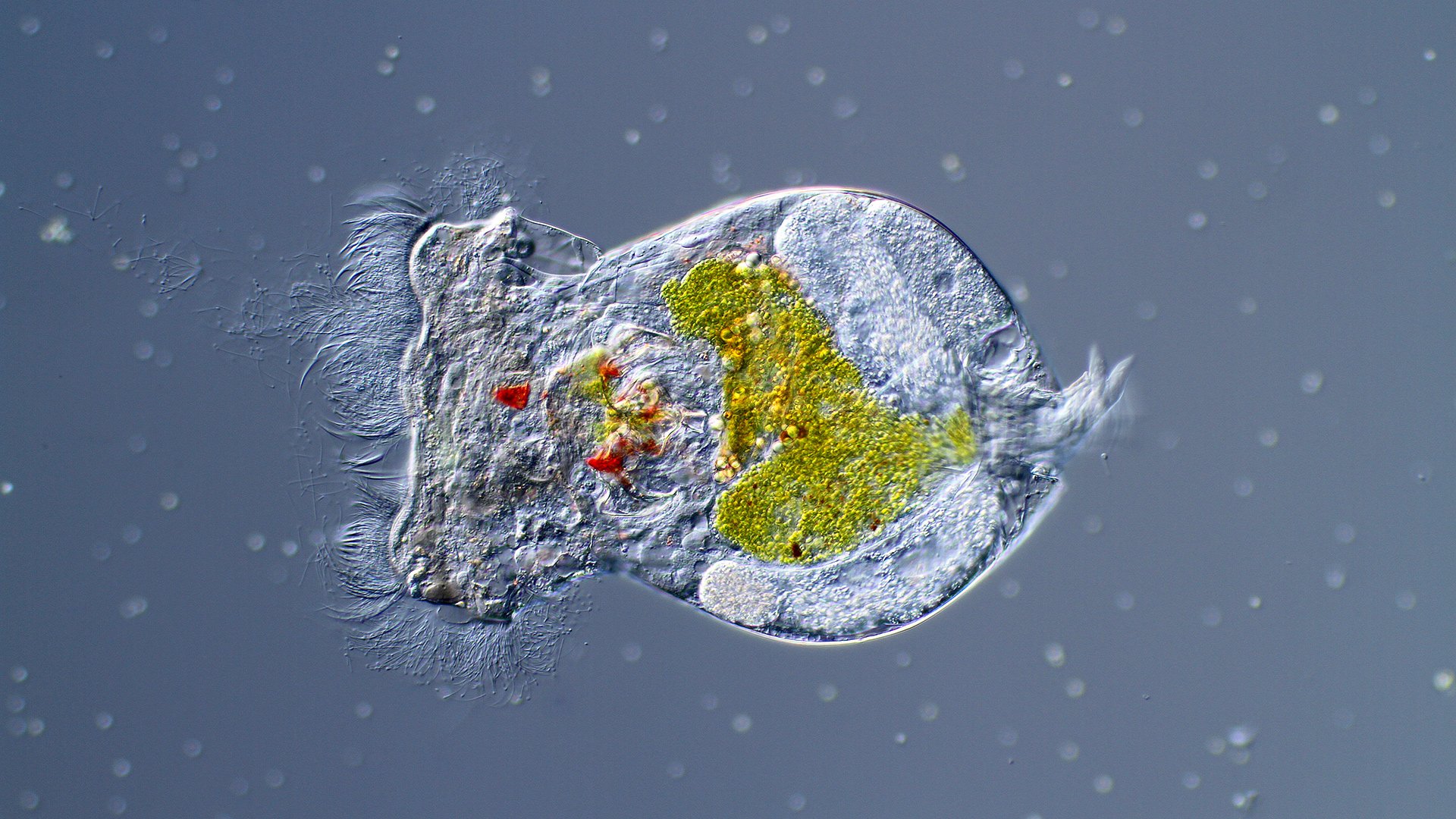Brachionus plicatilis is found worldwide in the seas and oceans. It plays an important role in nature there. As a rotifer, Brachionus plicatilis belongs to a group of organisms called zooplankton. These microorganisms form the basis of the food web and serve as food for larger animals. Additionally, Brachionus plicatilis is sensitive to harmful substances in the water. Therefore, this organism is often used for research on toxins in seawater.
Brachionus plicatilis is found worldwide in the seas and oceans. It plays an important role in nature there. As a rotifer, Brachionus plicatilis belongs to a group of organisms called zooplankton. These microorganisms form the basis of the food web and serve as food for larger animals. Additionally, Brachionus plicatilis is sensitive to harmful substances in the water. Therefore, this organism is often used for research on toxins in seawater.
Crowned as a rotifer
Brachionus plicatilis measures between 0.2 and 0.6 mm in length and belongs to the group of rotifers (Rotifera). Just like other rotifers, Brachionus also has a special structure near its head that resembles a 'crown'. This crown is made up of tiny moving hairs. These microorganisms use the crown to gather their food, especially phytoplankton, and to propel themselves forward.
Food for young seahorses
Rotifers are often used as fish food. They are small in size and rich in nutrients, making them particularly suitable as food for fish larvae. Before the ARTIS Aquarium was closed and renovated, Brachionus was used as food for the seahorses . The laboratory of ARTIS-Micropia cultivated Brachionus itself for the Aquarium. They also cultivated the food for Brachionus. For this purpose, two types of microalgae, Nannochloropsis and Tetraselmis, were specially included in the Micropia collection.
Thanks to this initiative, there was no need to purchase Brachionus anymore. This not only saved money but also reduced our environmental impact by requiring fewer transports to ARTIS. Micropia contributed to a more sustainable operation of ARTIS.
Plastic soup for generations.
The extensive use of plastic has led to plastic pollution becoming a major problem worldwide. Much of the plastic waste that ends up in nature consists of tiny pieces, such as microplastics (smaller than 5 mm) and nanoplastics (smaller than 0.001 mm). It has been shown that these smaller plastic particles can easily accumulate in organisms, with all the associated consequences. With an increasing amount of nanoplastics in the oceans, scientists want to investigate their effects on marine life.
For example, researchers studied the effects of nanoplastics in the living environment of Brachionus over several generations. They found that Brachionus ate less and became smaller. Offspring hatched later from their eggs, fewer eggs were laid, and there were fewer offspring. However, after breeding Brachionus for two generations in clean water, the adverse effects of nanoplastics disappeared. This research demonstrates that plastic pollution can harm even the smallest organisms, but cleaning up our waste has benefits for future generations.

